Hybrid Reference Current Generation Theory for Solar Fed UPFC System
Abstract
:1. Introduction
2. Proposed Control Methodology
3. Modeling of the Proposed Control Methodology
3.1. PV Module
3.2. Switched Clamped Diode Boost Converter
3.2.1. Mode 1
3.2.2. Mode 2
3.3. GWO Algorithm
3.4. Unified Power Flow Controller
3.5. DC-Link Voltage Regulation by ANN
3.6. Reference Current Generation by Genetic Assisted RBFNN
3.6.1. Genetic Algorithm
3.6.2. RBFNN
3.6.3. Genetic Assisted RBFNN
- Based on the quantity of neurons at the hidden layer, the RBFNN is initialized. The center of the bias function is attained from k-means clustering and the center width is estimated bywhere the width of the Gaussian function is represented by , center is denoted by , the alteration among actual and reference values is termed as spacing and is denoted by .
- Set the population size, process of selection, operators of crossover and mutation, and number of repetitions.
- Initialize the population as P with size N.
- RBFNN is constructed by means of the training samples; the output error of the network is computed by,
- The fitness of the chromosome is calculated by Equation (20).
- Based on the fitness evaluated, the chromosomes are arranged, and the ideal population fitness is computed. If or generation , go to Step 9 or go to next step.
- For the next generation, some optimum individuals are selected and reserved.
- Select a pair of chromosomes to perform crossover operation, through which a new generation is formed with four individuals. Repeat this process until the population reaches the maximum.
- Change the population number in the new generation and, thus, a new population is created. Now, set population as new population and . Go to Step 4.
- Get the perfect neural network layout. The final working of GA ends, which shows that the optimization is finished.
4. Results and Discussion
Hardware Implementation
5. Conclusions
Author Contributions
Funding
Institutional Review Board Statement
Informed Consent Statement
Data Availability Statement
Conflicts of Interest
References
- Barros, J.; De Apráiz, M.; Diego, R.I. Power Quality in DC Distribution Networks. Energies 2019, 12, 848. [Google Scholar] [CrossRef] [Green Version]
- Reid, W.E. Power quality issues-standards and guidelines. IEEE Trans. Ind. Appl. 1996, 32, 625–632. [Google Scholar] [CrossRef]
- González de la Rosa, J.-J.; Donsión, M.P. Analysis for Power Quality Monitoring. Energies 2020, 13, 514. [Google Scholar] [CrossRef] [Green Version]
- Abas, N.; Dilshad, S.; Khalid, A.; Saleem, M.S.; Khan, N. Power Quality Improvement Using Dynamic Voltage Restorer. IEEE Access 2020, 8, 164325–164339. [Google Scholar] [CrossRef]
- Gandomana, F.H.; Ahmadib, A.; Sharafc, A.M.; Sianod, P.; Poub, J.; Hredzakb, B.; Agelidise, V.G. Review of FACTS technologies and applications for power quality in smart grids with renewable energy systems. Elsevier Renew. Sustain. Energy Rev. 2018, 82, 502–514. [Google Scholar] [CrossRef]
- Popavath, L.N.; Kaliannan, P. Photovoltaic-STATCOM with Low Voltage Ride through Strategy and Power Quality Enhancement in a Grid Integrated Wind-PV System. Energies 2018, 7, 51. [Google Scholar] [CrossRef] [Green Version]
- Pilotto, L.A.S.; Bianco, A.; Long, W.F.; Edris, A.A. Impact of TCSC control methodologies on subsynchronous oscillations. IEEE Trans. Power Deliv. 2003, 18, 243–252. [Google Scholar] [CrossRef]
- Varma, R.K.; Rahman, S.A.; Vanderheide, T. New Control of PV Solar Farm as STATCOM (PV-STATCOM) for Increasing Grid Power Transmission Limits during Night and Day. IEEE Trans. Power Deliv. 2015, 30, 755–763. [Google Scholar] [CrossRef]
- Liang, Y.; Nwankpa, C.O. A new type of STATCOM based on cascading voltage-source inverters with phase-shifted unipolar SPWM. IEEE Trans. Ind. Appl. 1999, 35, 1118–1123. [Google Scholar] [CrossRef]
- Rao, P.; Crow, M.L.; Yang, Z. STATCOM control for power system voltage control applications. IEEE Trans. Power Deliv. 2000, 15, 1311–1317. [Google Scholar] [CrossRef] [Green Version]
- Tsang, K.M.; Chan, W.L. Design of single-phase active power filter using analogue cascade controller. Ieee Proc. Electr. Power Appl. 2006, 153, 735–741. [Google Scholar] [CrossRef]
- Carlos, G.A.D.; Jacobina, C.B.; Méllo, J.P.R.A.; Santos, E.C. A Shunt Active Power Filter Based on Cascaded Transformers Coupled With Three-Phase Bridge Converters. IEEE Trans. Ind. Appl. 2017, 53, 4673–4681. [Google Scholar] [CrossRef]
- Longhui, W.; Fang, Z.; Pengbo, Z.; Hongyu, L.; Zhaoan, W. Study on the Influence of Supply-Voltage Fluctuation on Shunt Active Power Filter. IEEE Trans. Power Deliv. 2007, 22, 1743–1749. [Google Scholar] [CrossRef]
- Shi, J.; Tang, Y.; Yang, K.; Ren, L.C.; Li, J.; Cheng, S. SMES Based Dynamic Voltage Restorer for Voltage Fluctuations Compensation. IEEE Trans. Appl. Supercond. 2010, 20, 1360–1364. [Google Scholar]
- Torres, A.P.; Sánchez, P.R.; Batlle, V.F. A Two Degrees of Freedom Resonant Control Scheme for Voltage-Sag Compensation in Dynamic Voltage Restorers. IEEE Trans. Power Electron. 2018, 33, 4852–4867. [Google Scholar] [CrossRef]
- Liu, J.Y.; Song, Y.H.; Mehta, P.A. Strategies for handling UPFC constraints in steady-state power flow and voltage control. IEEE Trans. Power Syst. 2000, 15, 566–571. [Google Scholar]
- Yang, S.; Liu, Y.; Wang, X.; Gunasekaran, D.; Karki, U.; Peng, F.Z. Modulation and Control of Transformerless UPFC. IEEE Trans. Power Electron. 2016, 31, 1050–1063. [Google Scholar] [CrossRef]
- Haque, M.M.; Ali, M.S.; Wolfs, P.; Blaabjerg, F. A UPFC for Voltage Regulation in LV Distribution Feeders With a DC-Link Ripple Voltage Suppression Technique. IEEE Trans. Ind. Appl. 2020, 56, 6857–6870. [Google Scholar] [CrossRef]
- Gholipour, E.; Saadate, S. Improving of transient stability of power systems using UPFC. IEEE Trans. Power Deliv. 2005, 20, 1677–1682. [Google Scholar] [CrossRef]
- Singh, B.; Solanki, J. A Comparison of Control Algorithms for DSTATCOM. IEEE Trans. Ind. Electron. 2009, 56, 2738–2745. [Google Scholar] [CrossRef]
- Singh, B.; Jain, C.; Goel, S.; Chandra, A.; Haddad, K.A. A Multifunctional Grid-Tied Solar Energy Conversion System With ANF-Based Control Approach. IEEE Trans. Ind. Appl. 2016, 52, 3663–3672. [Google Scholar] [CrossRef]
- Teke, A.; Saribulut, L.; Tumay, M. A Novel Reference Signal Generation Method for Power-Quality Improvement of Unified Power-Quality Conditioner. IEEE Trans. Power Deliv. 2011, 26, 2205–2214. [Google Scholar] [CrossRef]
- Aghdam, F.H.; Abapour, M. Reliability and Cost Analysis of Multistage Boost Converters Connected to PV Panels. IEEE J. Photovolt. 2016, 6, 981–989. [Google Scholar] [CrossRef]
- Mangu, B.; Akshatha, S.; Suryanarayana, D.; Fernandes, B.G. Grid-Connected PV-Wind-Battery-Based Multi-Input Transformer-Coupled Bidirectional DC-DC Converter for Household Applications. IEEE J. Emerg. Sel. Top. Power Electron. 2016, 4, 1086–1095. [Google Scholar] [CrossRef]
- Kardan, F.; Alizadeh, R.; Banaei, M.R. A New Three Input DC/DC Converter for Hybrid PV/FC/Battery Applications. IEEE J. Emerg. Sel. Top. Power Electron. 2017, 5, 1771–1778. [Google Scholar] [CrossRef]
- Brito, M.A.G.; Galotto, L.; Sampaio, L.P.; Melo, G.A.; Canesin, C.A. Evaluation of the Main MPPT Techniques for Photovoltaic Applications. IEEE Trans. Ind. Electron. 2013, 60, 1156–1167. [Google Scholar] [CrossRef]
- Bollipo, R.B.; Mikkili, S.; Bonthagorla, P.K. Critical Review on PV MPPT Techniques: Classical, Intelligent and Optimisation. IET Renew. Power Gener. 2020, 14, 1433–1452. [Google Scholar] [CrossRef]
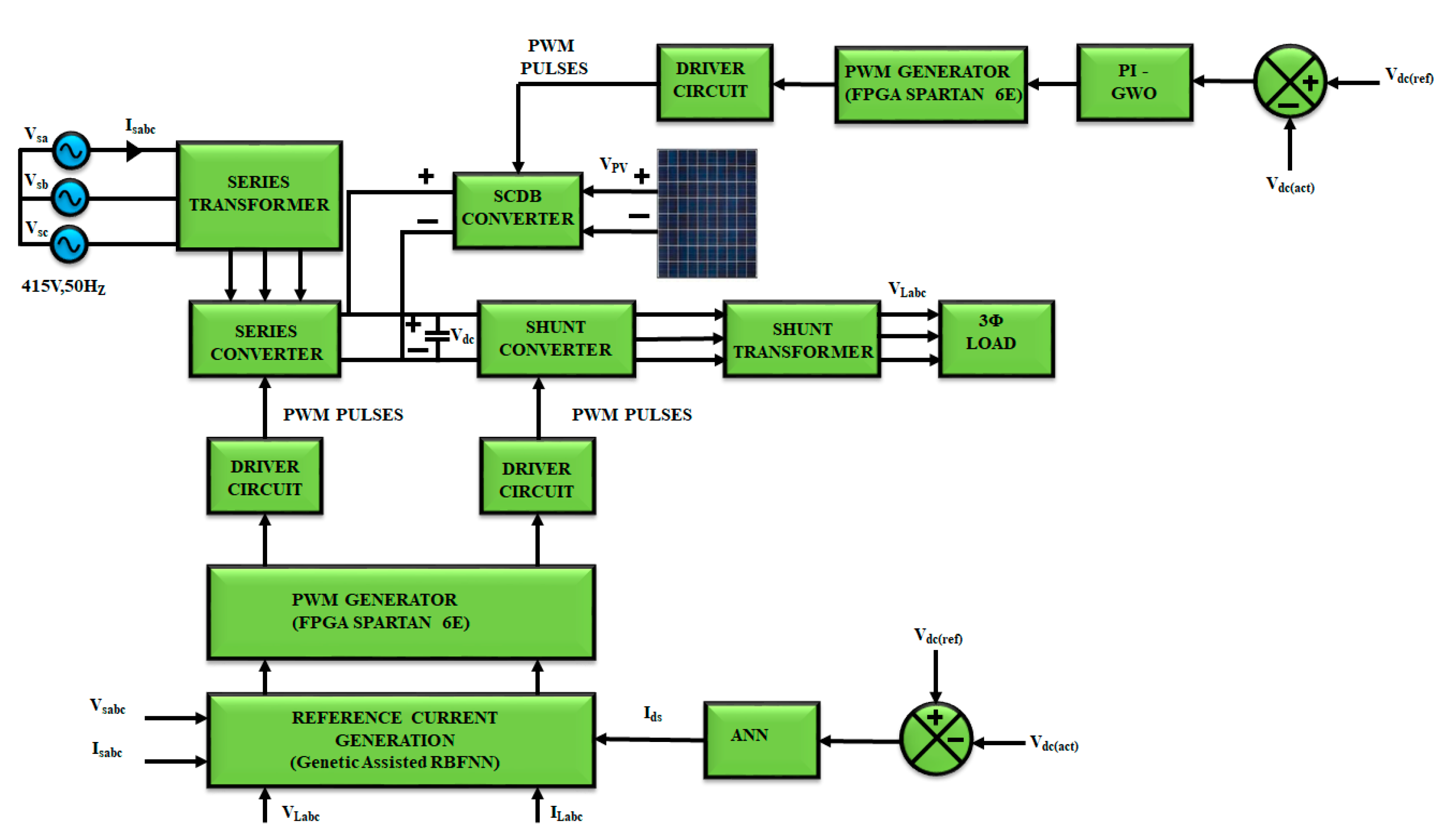
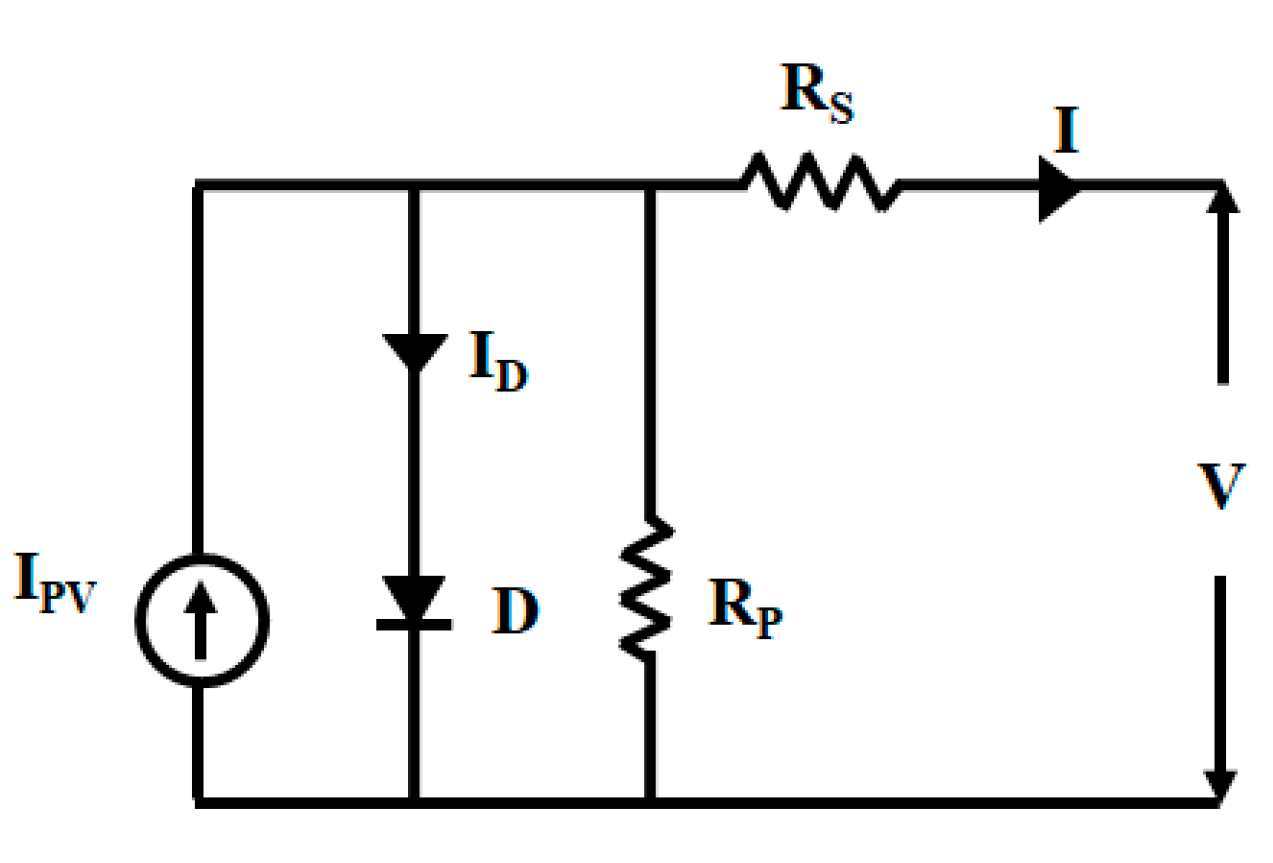


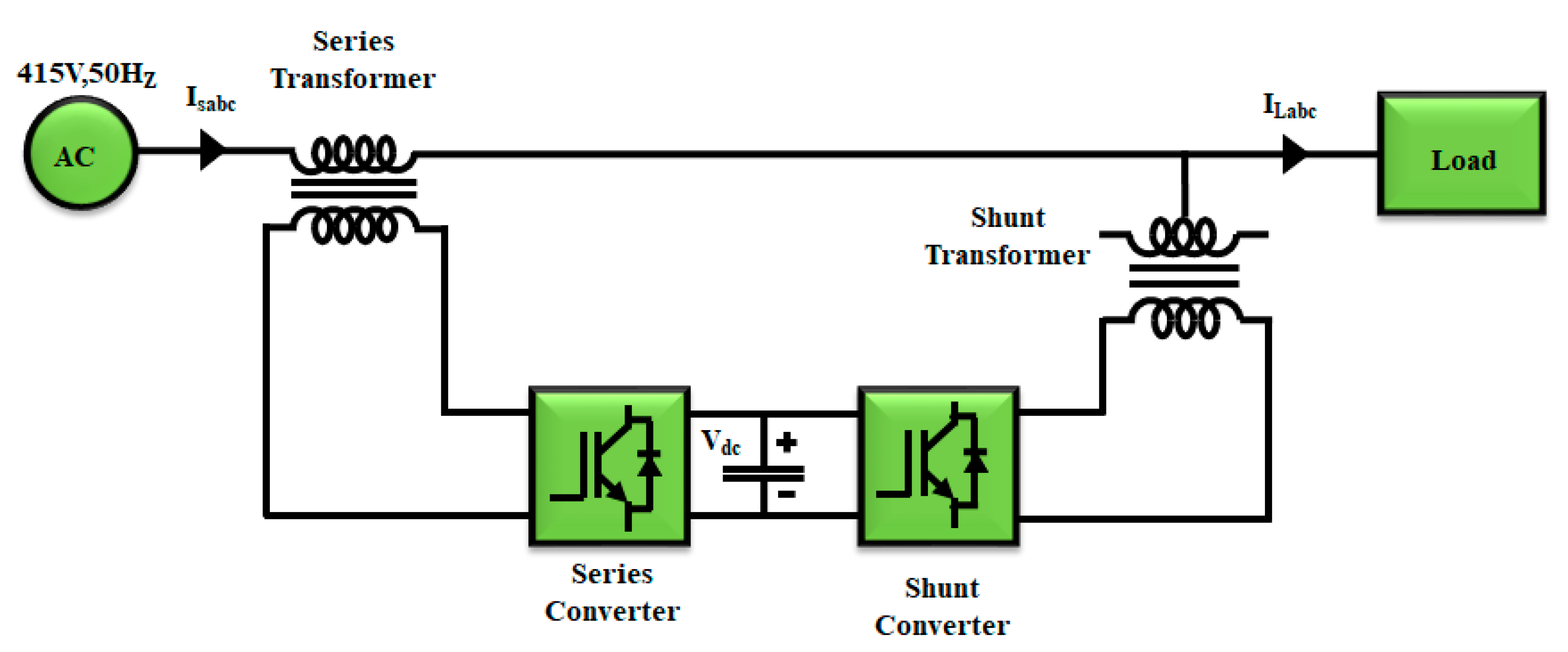
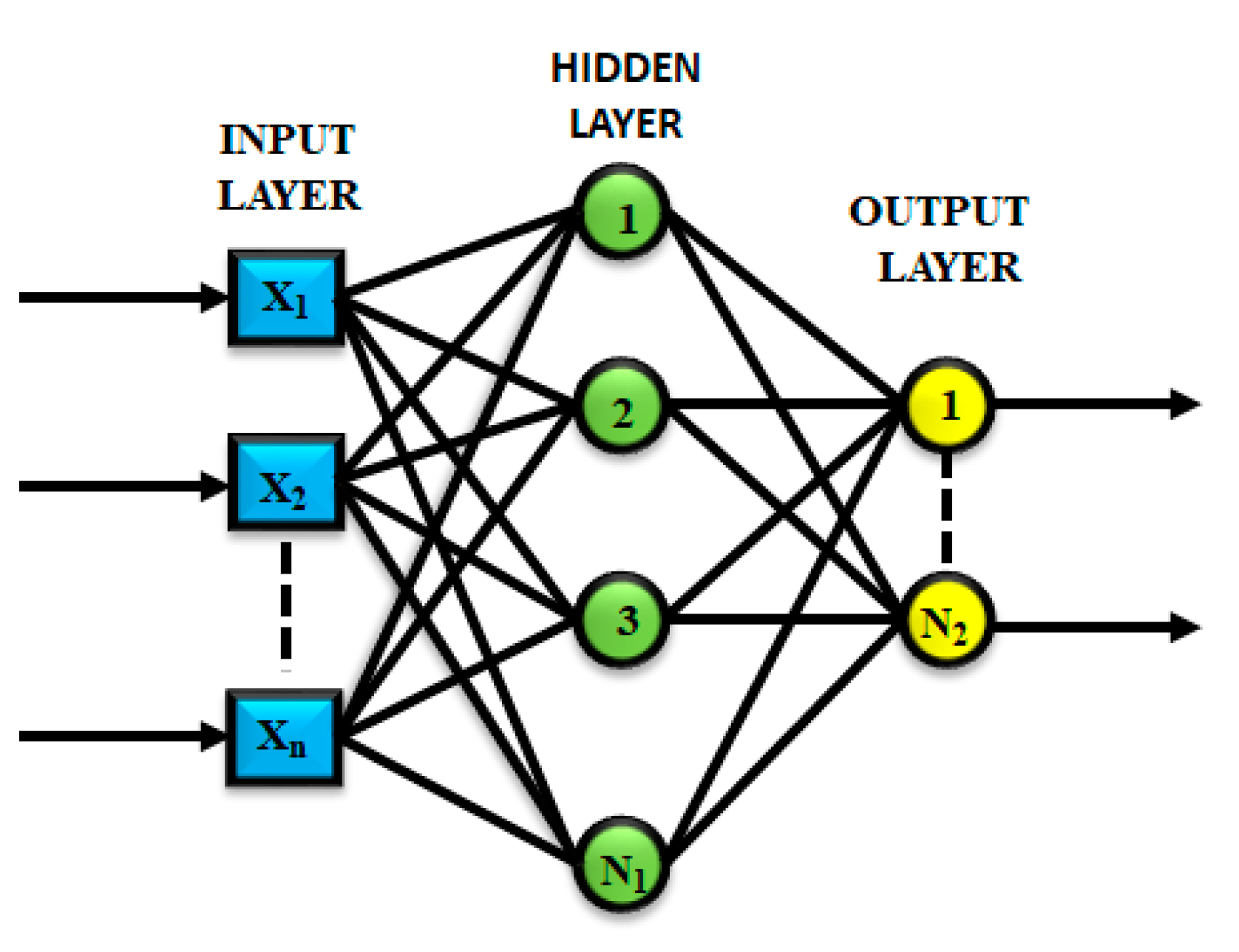
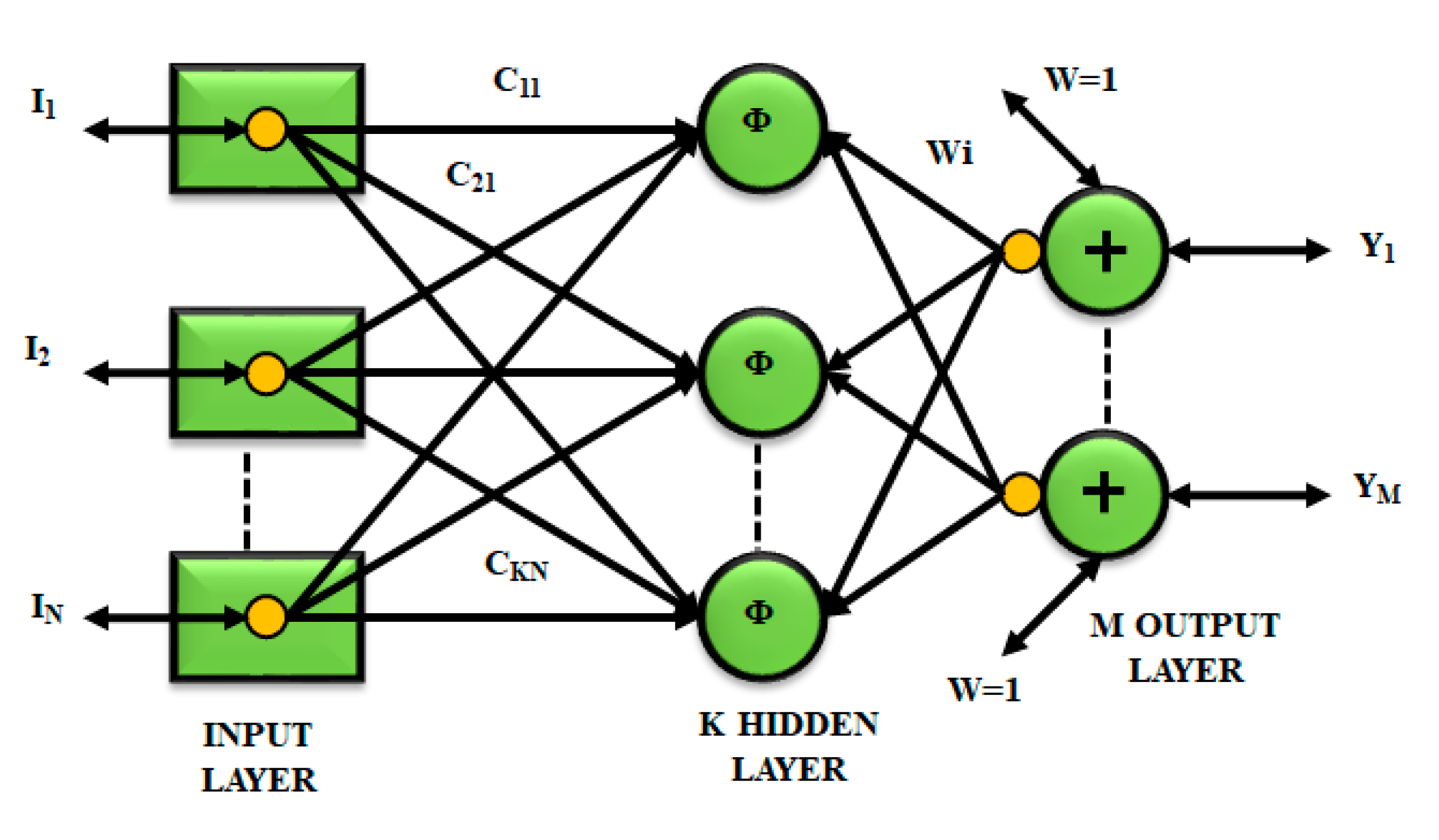


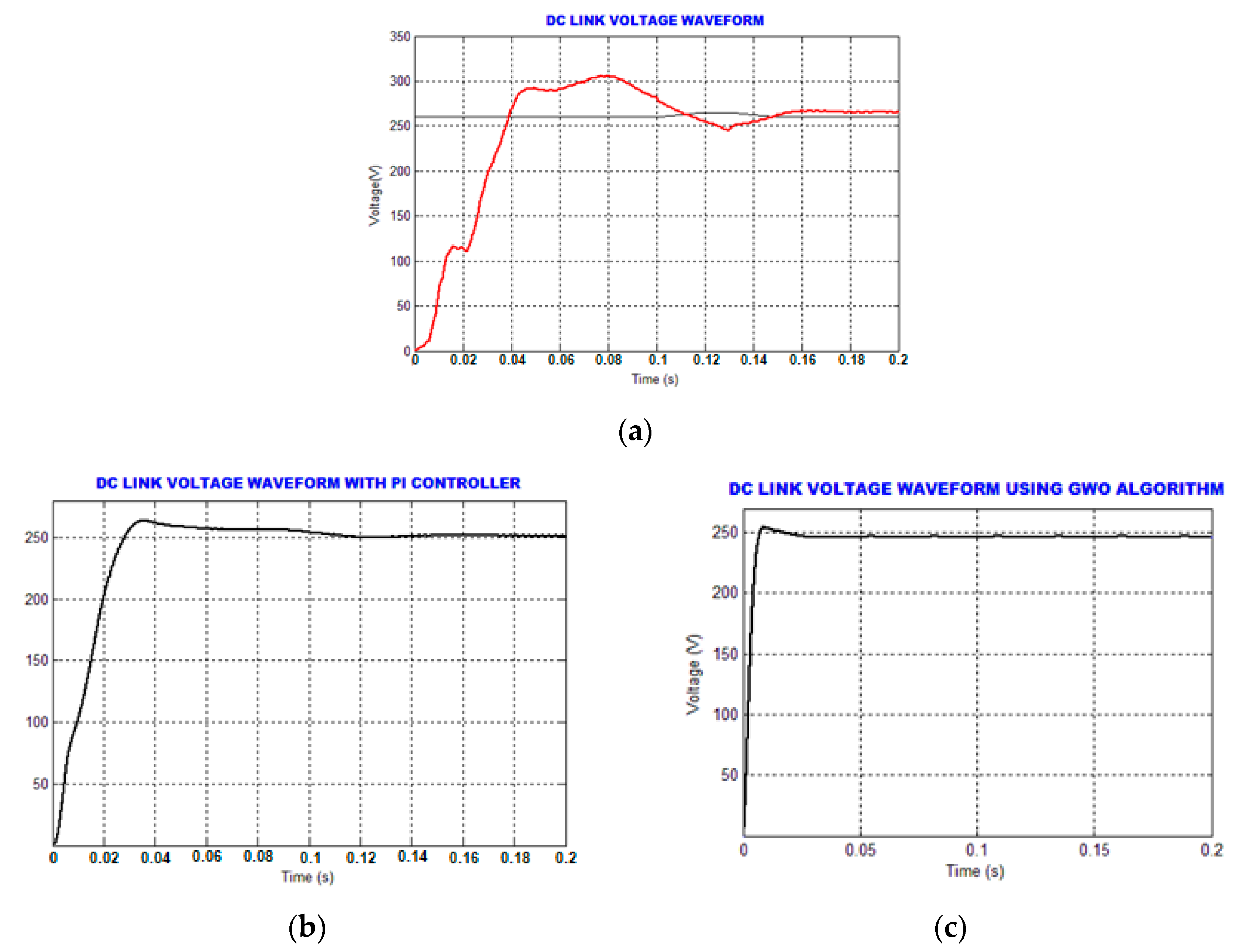

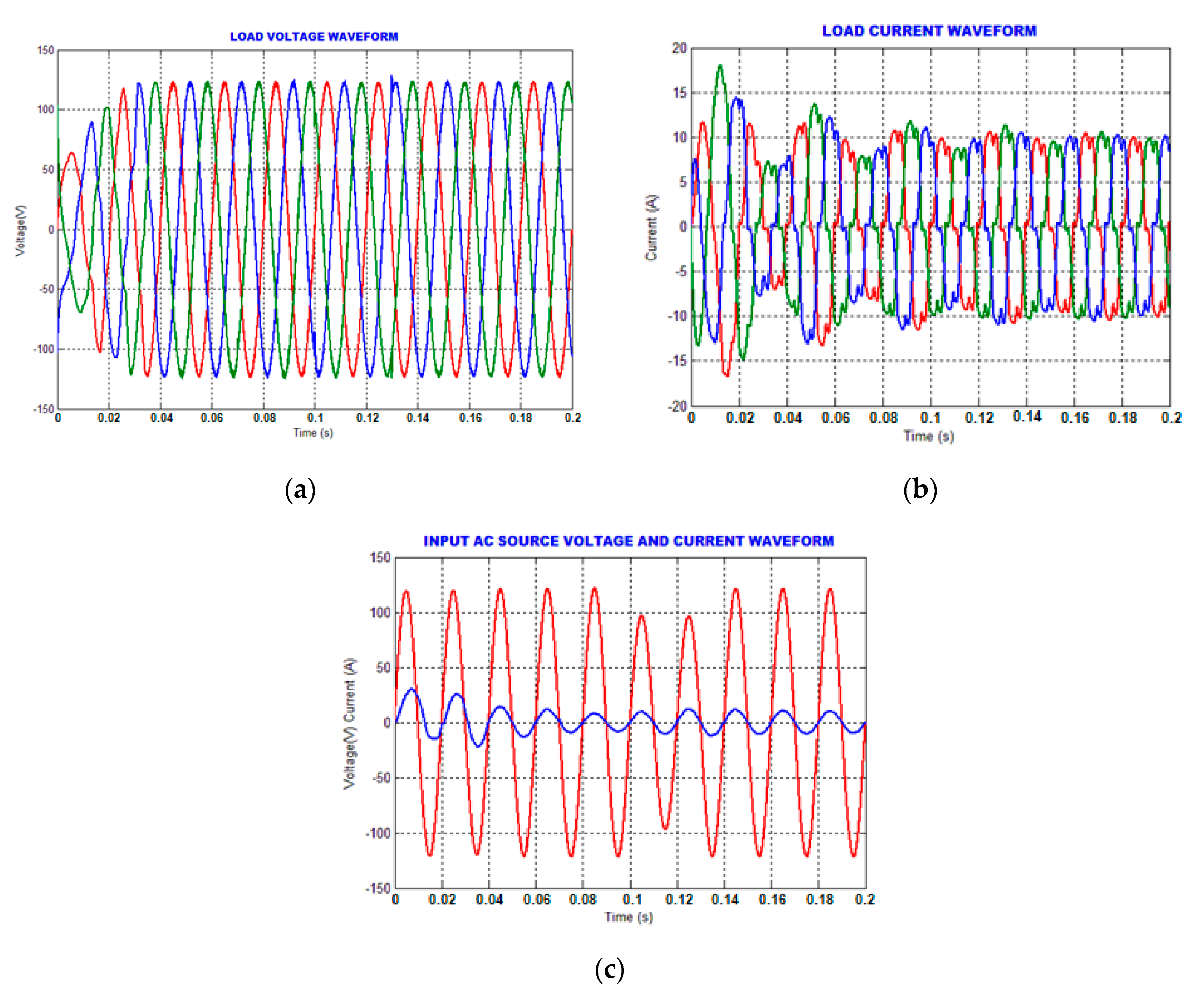
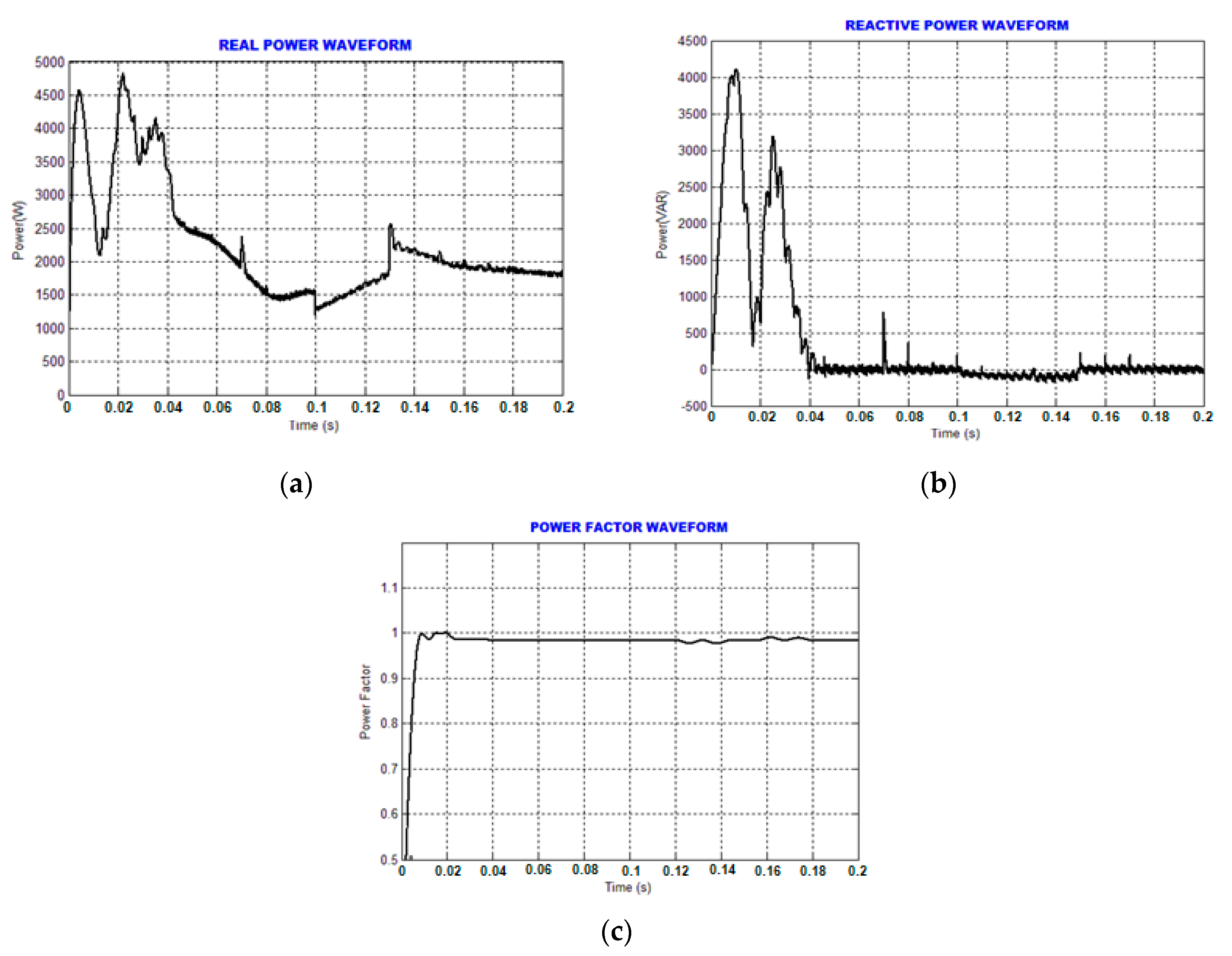
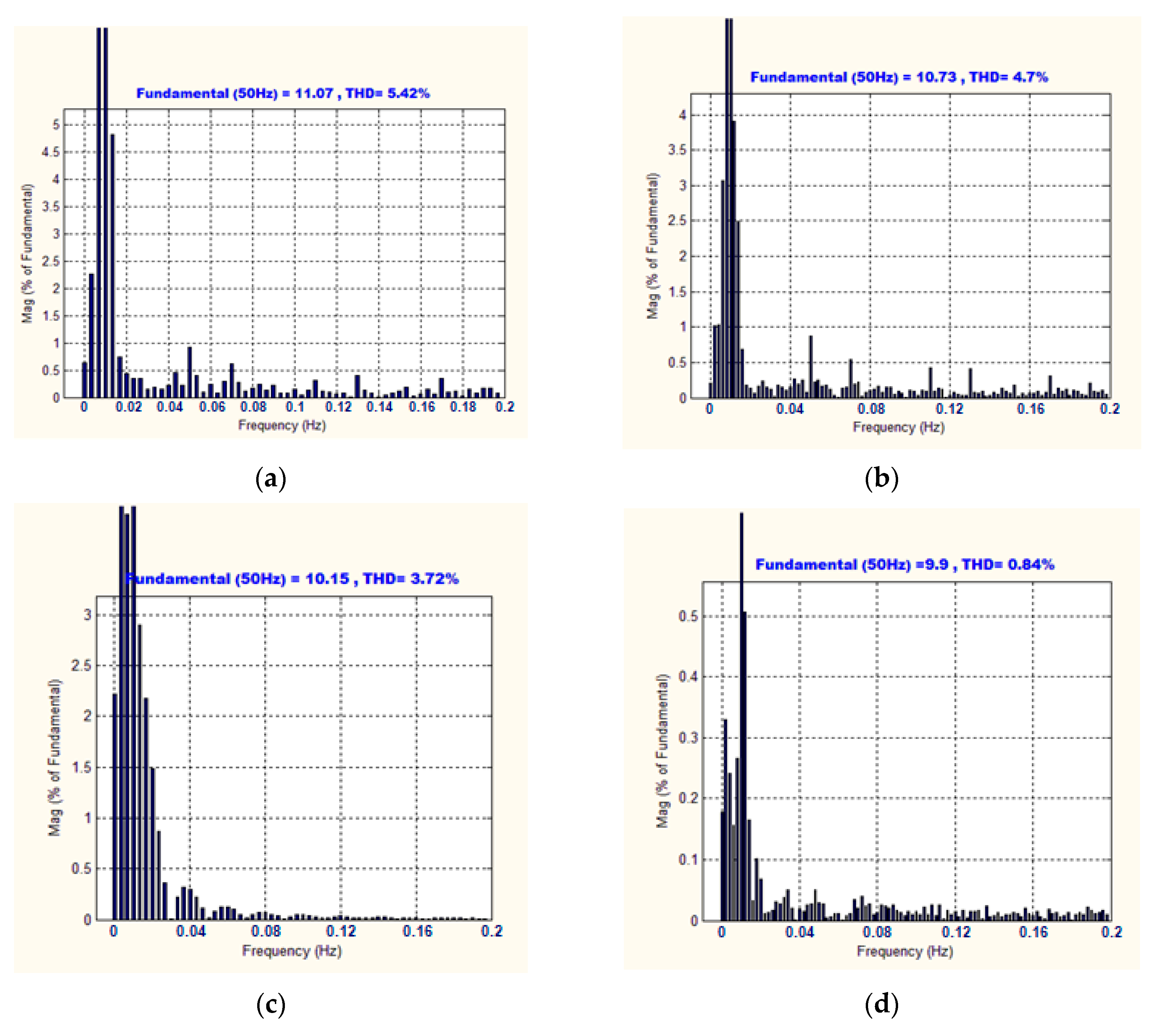


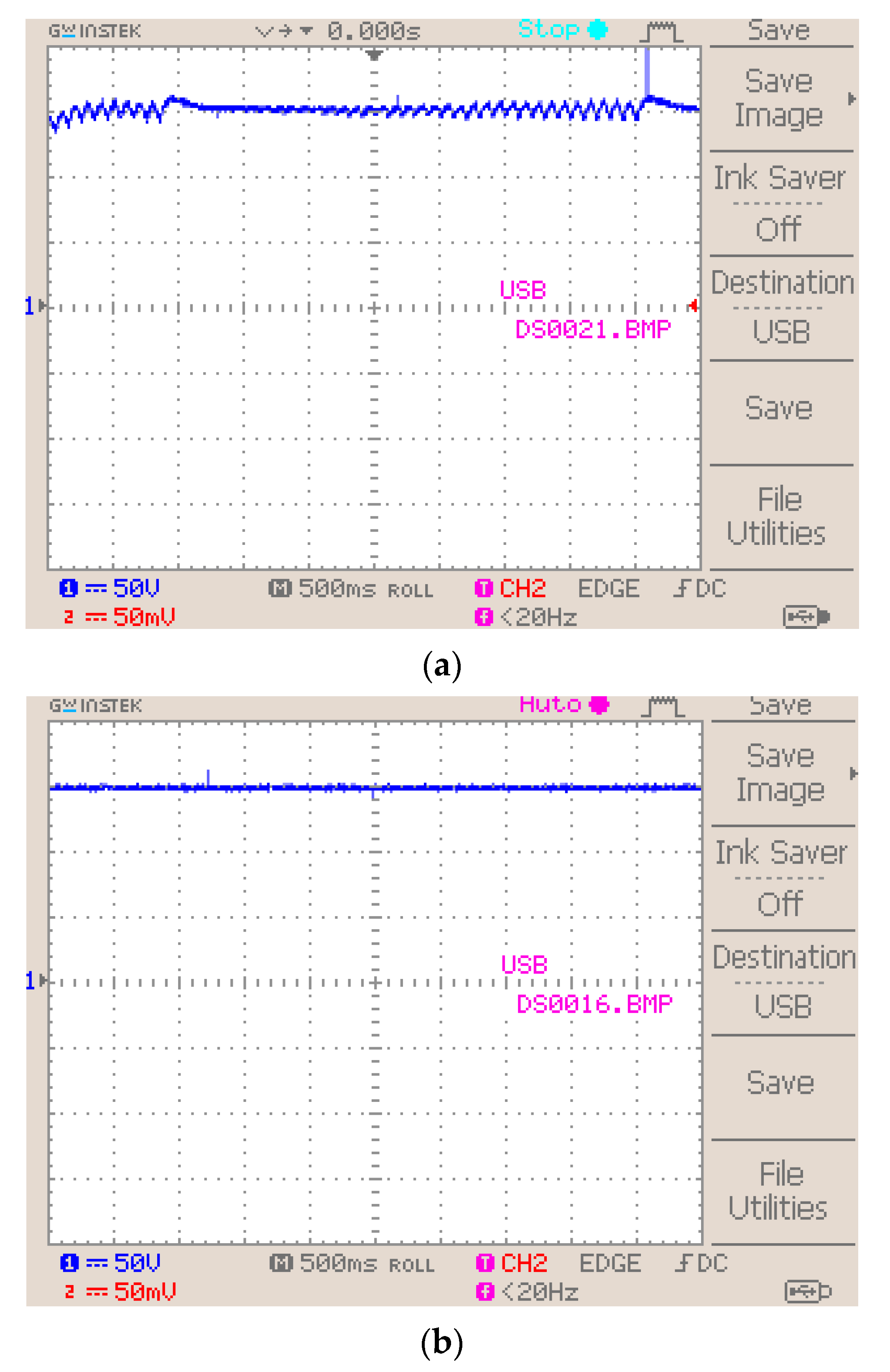
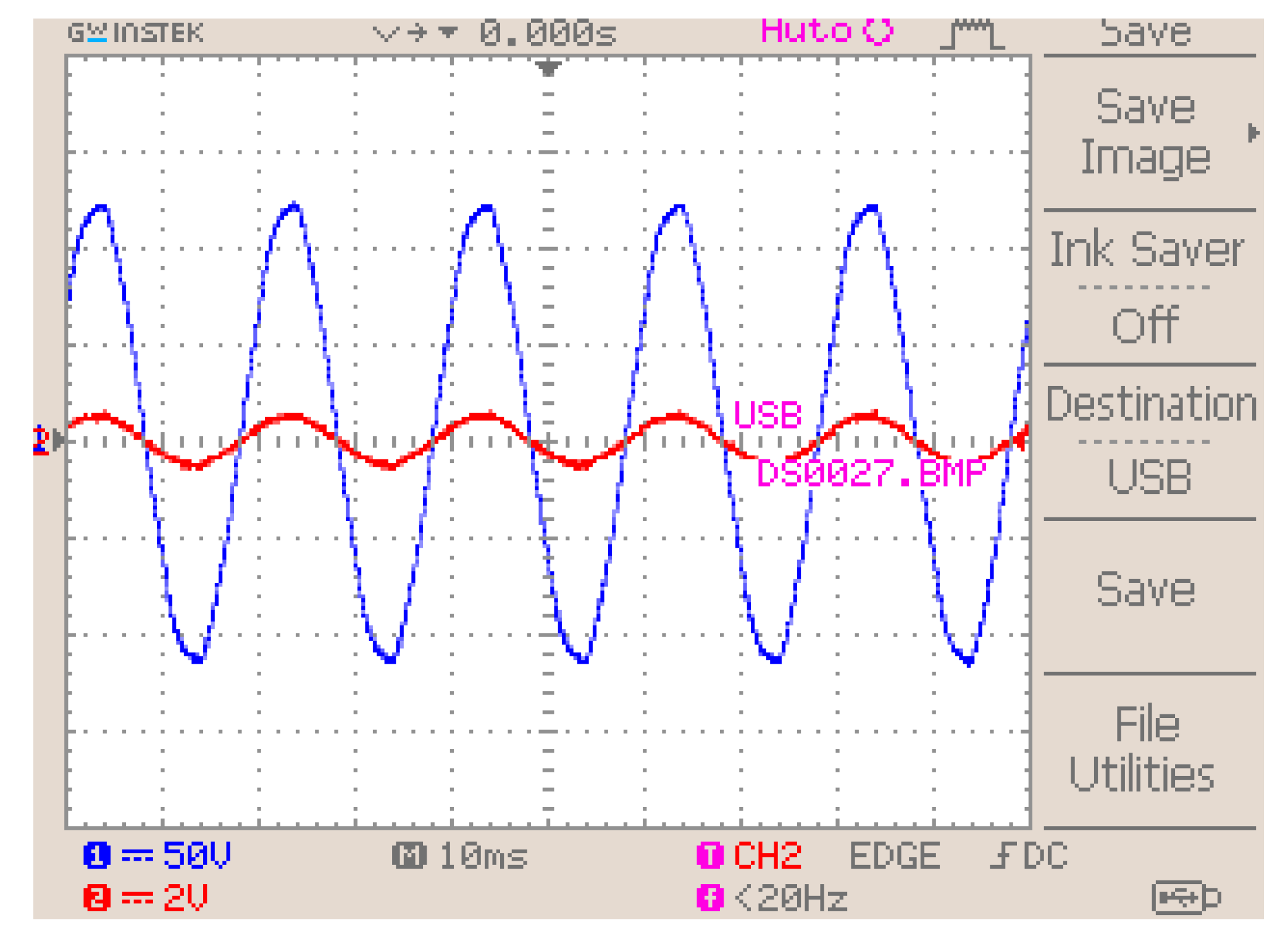


| Parameters | Values |
|---|---|
| L1 | 200 µH |
| L2 | 130 µH |
| L3 | 100 µH |
| C1 = C2 | 100 µF |
| Switching frequency | 10 KHz |
Publisher’s Note: MDPI stays neutral with regard to jurisdictional claims in published maps and institutional affiliations. |
© 2021 by the authors. Licensee MDPI, Basel, Switzerland. This article is an open access article distributed under the terms and conditions of the Creative Commons Attribution (CC BY) license (http://creativecommons.org/licenses/by/4.0/).
Share and Cite
Senthil Kumar, R.; Mohana Sundaram, K.; Tamilselvan, K.S. Hybrid Reference Current Generation Theory for Solar Fed UPFC System. Energies 2021, 14, 1527. https://doi.org/10.3390/en14061527
Senthil Kumar R, Mohana Sundaram K, Tamilselvan KS. Hybrid Reference Current Generation Theory for Solar Fed UPFC System. Energies. 2021; 14(6):1527. https://doi.org/10.3390/en14061527
Chicago/Turabian StyleSenthil Kumar, R., K. Mohana Sundaram, and K. S. Tamilselvan. 2021. "Hybrid Reference Current Generation Theory for Solar Fed UPFC System" Energies 14, no. 6: 1527. https://doi.org/10.3390/en14061527






